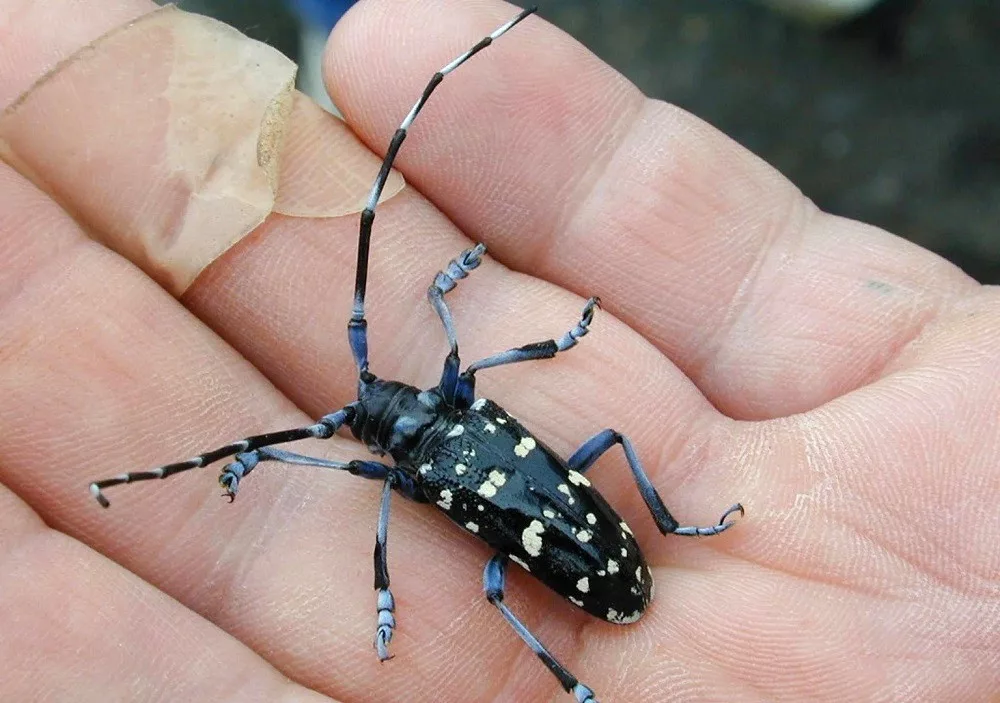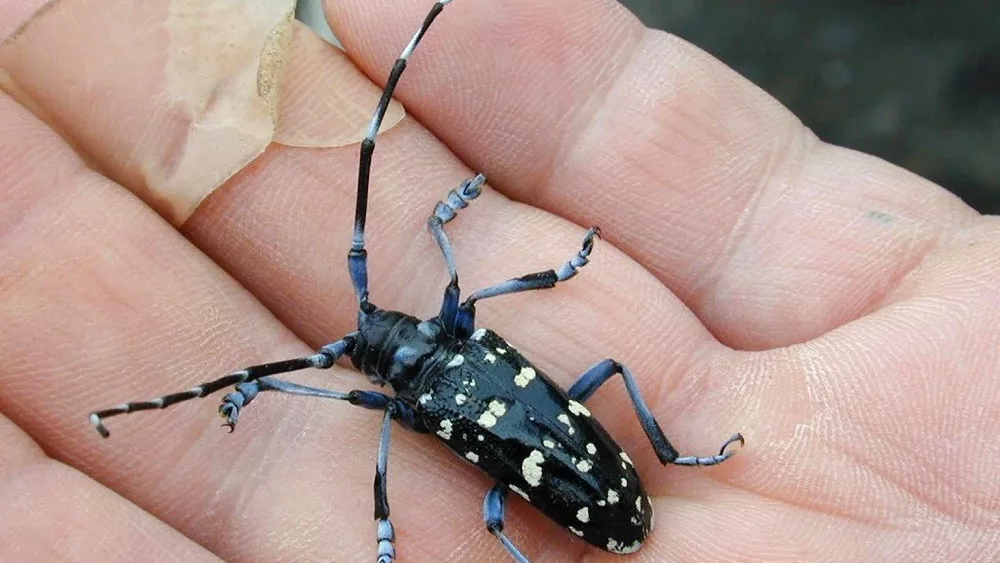
If you’re an Indiana woodland owner, you should be on the lookout for an invasive insect called the Asian Longhorned Beetle that could cause major damage to your trees.
“This is one of those insects that we kind of wish didn’t exist, so we very tightly control and act on them as soon as we find them,” according to Bob Bruner, Exotic Forest Pest Educator with Purdue University’s Department of Entomology.
“The damage that it does is so intense that it’s actually fatal to most trees,” he says. “What they do is they bore into the tree and they go past the bark deep into the wood where they’ll consume a lot of the tissue. Unfortunately, trees just can’t survive the level of damage they do. Eventually you’ll see the limbs die back, the leaves fall off, and the tree will eventually become brittle and won’t stay standing very well, so the trees themselves become dangerous too.”
Unlike the Emerald Ash Borer that killed millions of ash trees across Indiana and the Midwest, the Asian Longhorned Beetle can cause widespread damage to many different species of trees.
“Ones that we would be looking out for here in Indiana include Ash as well, but you’ll also be looking at Birch, Elm, Hackberry, Chestnut, Maple, and I believe Poplar and Willow are also on that list,” says Bruner.
“Many of these trees are planted for timber purposes, so you can see that there’s a lot of potential for damage to areas where people have a lot of investment.”

Bruner says the pests are easy to identify.
“You’re going to be looking for a large beetle that’s going to be shiny black with white dots on its body,” he says. “There are a couple of beetles that look like that—one of them is called a Pine Sawyer Beetle—but what you’re looking for here is a beetle that’s going to be so shiny black, that it will almost have a blue sheen to it. It will also have very long antenna that stretch much farther past the length of its body.
“You can also look in the trees that it’s around and if you can find a circular hole in the tree that’s about big enough to put a number two pencil in, that’s going to be a sign that Asian Longhorned Beetle has emerged from that tree and it’s a good time to start looking closer for the bug itself,” says Bruner.
One reason for the spread of the insect is through the purchase and movement of untreated firewood. When traveling, leave firewood at home and purchase what you need locally or choose certified, heat-treated firewood to help prevent the spread of invasive insects.
Bruner adds if you see the Asian Longhorned Beetle in your woodlands, call the Indiana Department of Natural Resources (DNR) right away at 1-866-NO-EXOTIC. You’re also asked to photograph the beetle or tree damage. If you can, capture the beetle in a durable container and freeze it. This helps preserve the insect for identification.
“This is one of the most tightly regulated insects amongst tree pests. You can actually look up on the USDA’s website for them and they map out areas where infestations are known and what they’re doing about those infestations.”
You can also report invasive insect pests—as well as invasive plants and animals—at ReportInvasive.com.
Click BELOW to hear the full conversation with Bob Bruner, Exotic Forest Pest Educator with Purdue University, as he also discusses the negative impact of the Spotted Lanternfly.
For more information about the Indiana Forestry and Woodland Owners Association, visit IFWOA.org.






